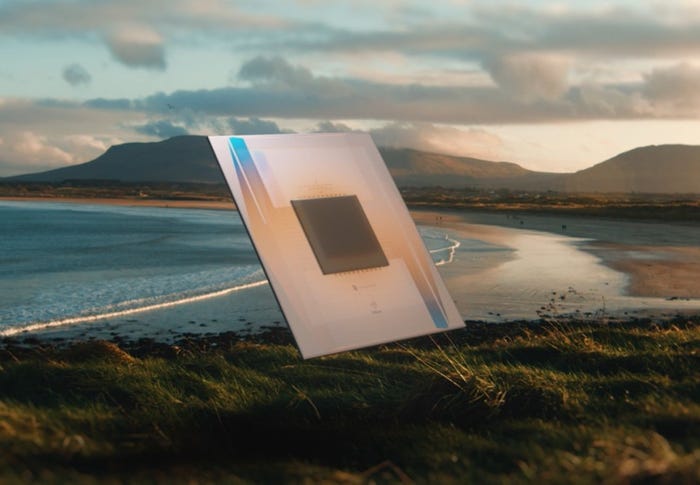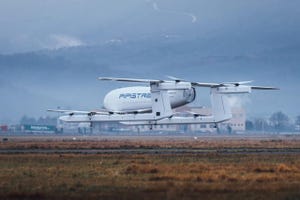Nvidia CEO: AI Advancing Self-Driving Cars, Robotics, Digital Manufacturing at CES 2025Nvidia CEO: AI Advancing Self-Driving Cars, Robotics, Digital Manufacturing at CES 2025
Jensen Huang announces industrial technology powered by physical AI during keynote

Nvidia is rolling out AI-powered technology that could transform self-driving cars, robotics and digital manufacturing, CEO Jensen Huang announced in a keynote at CES 2025.
Saying that AI has been advancing at an incredible pace, Huang suggested AI is now entering a new era with a direct real-world impact.
“It started with perception AI — understanding images, words and sounds. Then generative AI — creating text, images and sound,” Huang said, before adding that we’re now entering the era of “physical AI, AI that can proceed, reason, plan and act.”
Here are the highlights of Nvidia’s announcements that aim to integrate AI into physical environments.
Driving the Autonomous Vehicle Revolution
Nvidia introduced its latest Drive Hyperion platform, powered by the new Nvidia AGX Thor system-on-a-chip (SoC). The platform integrates hardware, software and generative AI capabilities to enable safer, smarter autonomous vehicles. Partnerships with Toyota, Mercedes-Benz, Volvo and other automakers demonstrate Nvidia’s pivotal role in automotive autonomy.
Toyota, the world’s largest automaker, is building its next-generation vehicles on Nvidia DRIVE AGX Orin, using the safety-certified DriveOS operating system. Additionally, Nvidia is collaborating with Hyundai Motor Group to deploy AI for smarter vehicle systems and manufacturing processes.
Synthetic data generation is at the heart of Nvidia’s AV strategy. By using Nvidia Omniverse and Cosmos, automakers can simulate billions of driving scenarios, providing the vast datasets required for safe and reliable self-driving systems. These technologies reduce dependence on real-world data collection, significantly accelerating AV development.
“The autonomous vehicle revolution is here,” Huang said. “Building autonomous vehicles, like all robots, requires three computers: Nvidia DGX to train AI models, Omniverse to test drive and generate synthetic data and Drive AGX, a supercomputer in the car.”
“Just as computer graphics was revolutionized at such an incredible pace, you’re going to see the pace of AV development increasing tremendously over the next several years,” Huang added.
Accelerating Robotics With Nvidia Cosmos
Nvidia also unveiled its Cosmos platform, designed to empower robotics and autonomous systems with advanced AI capabilities. The platform integrates generative AI models, enabling robots to analyze environments, plan and make smarter decisions. Leading robotics companies, including Agile Robots, Waabi and XPeng, are adopting Cosmos to power autonomous systems in industries like logistics, warehousing and transportation.
In his keynote, Huang likened Cosmos to a “ChatGPT moment” for robotics, emphasizing its potential to bring foresight and real-world simulation capabilities to physical AI systems. Early adopters including Uber are using Cosmos to streamline logistics, while Hyundai is using Nvidia AI and Omniverse to enhance robotics and digital manufacturing processes.
Cosmos models ingest text, image or video prompts and generate virtual world states as videos, Huang explained. “Cosmos generations prioritize the unique requirements of AV and robotics use cases like real-world environments, lighting and object permanence.”
Revolutionizing Digital Manufacturing
In manufacturing, Nvidia's AI tools are enabling automation at an unprecedented scale. The Isaac GR00T Blueprint generates synthetic motion data for training humanoid robots, expediting the development of intelligent machines for industrial environments. Additionally, the Mega Blueprint supports large-scale simulations of robotic fleets, with early adopters like KION and Accenture already seeing the benefits in warehouse automation.
Huang also announced AI Blueprints for agentic AI, which enable developers to create custom AI agents tailored to enterprise needs. These agents can perform tasks such as fraud detection, supply chain optimization and content summarization, helping businesses enhance efficiency and productivity.
Other Announcements
Nvidia also used the CES 2025 keynote to launch innovations that aim to advance AI and graphics technologies.
Nvidia GeForce RTX 50 Series GPUs: Built on the Blackwell architecture, these GPUs deliver exceptional visual realism and unprecedented performance, ideal for gaming and professional content creation.
AI Foundation Models: Designed for RTX PCs, these include NIM microservices and AI Blueprints to streamline creating “digital humans,” podcasts and multimedia content.
Project DIGITS: A compact AI supercomputer powered by the Grace Blackwell chip, providing developers with desktop-scale AI performance in a portable package.
Read more about:
CES 2025About the Author
You May Also Like






.png?width=300&auto=webp&quality=80&disable=upscale)
.jpg?width=300&auto=webp&quality=80&disable=upscale)